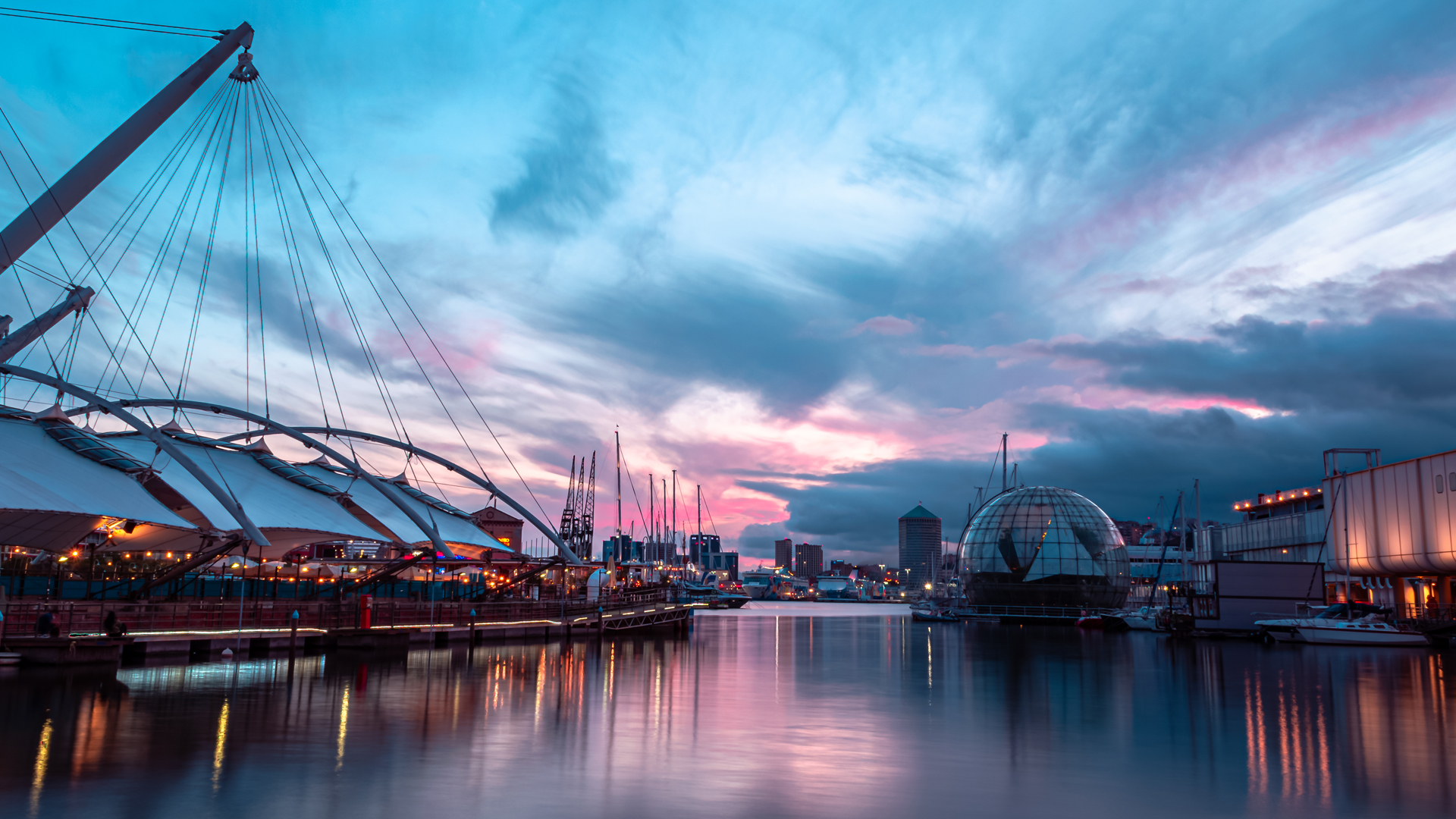The first feeling you get visiting Genoa is being in a city showing a glorious, rich, combative, and cosmopolitan past. Genoa is a multifaceted port, a city of magnificently wealthy and historical palaces. Its caruggi - narrow medieval streets often covered in arcades - create a labyrinth in which tourists, even today, normally get lost and, at the same time, experience the flavor of the truest Italy.
“To the Ligurians, harsh sons of the mountains, the same land taught that nothing is achieved but with tenacity and efforts”, wrote Marcus Tullius Cicero in the first century B.C. to describe, using few essential words, the spirit of the Ligurian land. A French proverb exalts the city’s pride by saying, “Rome the holy, Bologna the duct, Genoa the superb, Florence the beautiful, Venice the rich.”

Liguria, the region connecting Tuscany to France, is narrow and long, and the little available land, squeezed between mountains and sea, is crowded with villages and wonders to discover—starting with Genoa. The city’s most famous son, Christopher Columbus, was the pioneer who opened the way of communication between Europe and the New World in 1492, and in regard to his role in America, more recent studies of his travels chronicle his role in initiating the genocide of Native Americans.
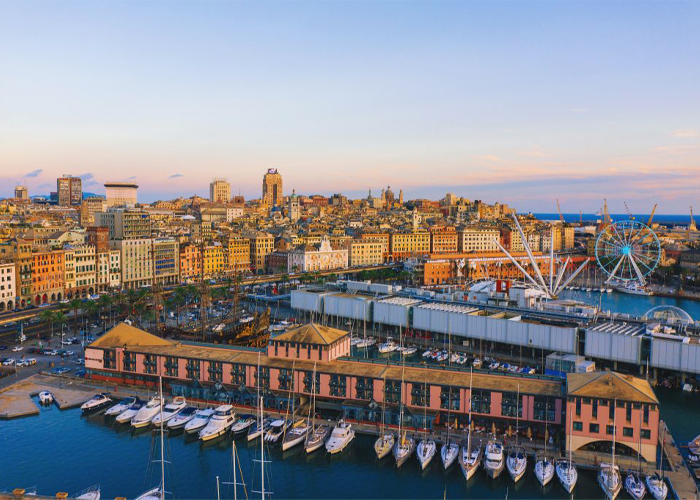
The man who made Genoa the aristocratic municipality we still admire today was its enlightened governor, Prince Andrea Doria, admiral of the Republic of Genoa’s fleet established in 1528. Doria was a strategist beloved and respected by his fellow citizens. For generations, many artists and intellectuals have fallen in love with the city. Among them is Mark Twain who disembarked from a ship in Genoa exactly 155 years ago and commented, “It is unthinkable that such a solid city could go to ruin,” while also praising its uniqueness, Italianness, and the most beautiful women he had ever seen. Twain was a passenger on the first-ever cruise in history, traveling on the Quaker City. The ship departed from New York in 1867 and toured half of Europe, also docking in the ports of Genoa, Livorno, Civitavecchia, and Naples. Tourism was still an exclusive leisure for aristocrats and the wealthy bourgeoisie at the time. Twain’s trip inspired his humorous travel book, The Innocents Abroad.
Even the master of French realism, Gustave Flaubert, wrote: “From Voltri to Genoa you can always see houses, everything announces a great city. Soon the port appears and you can see the beautiful city sitting at the foot of the mountains: The lighthouse of the Lantern, like a minaret, gives the whole something oriental and one thinks of Constantinople.”
La Lanterna
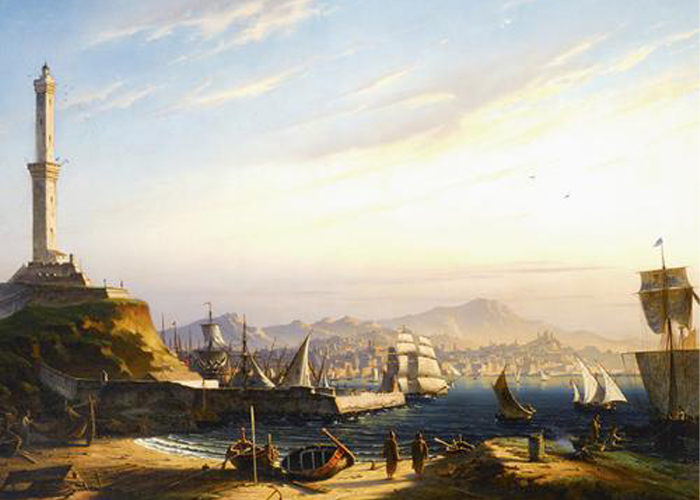
If Columbus is Genoa’s symbolic character, the city’s iconic structure is the lighthouse. Since 1128 it has been the symbol of the Ligurian capital, guiding vessels into the port for 895 years. Rebuilt in 1534, at 249 feet high it is the highest lighthouse in the Mediterranean Sea, the second highest in Europe, and fifth highest in the world. Many artists have been fascinated by the Genoese lighthouse, portraying it in watercolors, paintings, engravings, posters, and photographs throughout the ages. You can even take a virtual tour for a worthwhile trip.
Duomo di Genova

The seat of the Archbishop of Genoa is a spectacular medieval church consecrated by Pope Gelasius II in 1118. The city’s Duomo, Duomo di Genova or Cattedrale di San Lorenzo, was built between the 12th and 14th centuries and underwent some later additions. Secondary naves and side covers reflect the Romanesque style and the main facade has an early 13th-century gothic character, while capitals and columns and interior corridors date from the early 14th century. The bell tower and dome were built in the 16th century. The magnificent dark green and white marble are unforgettable.
Columbus House
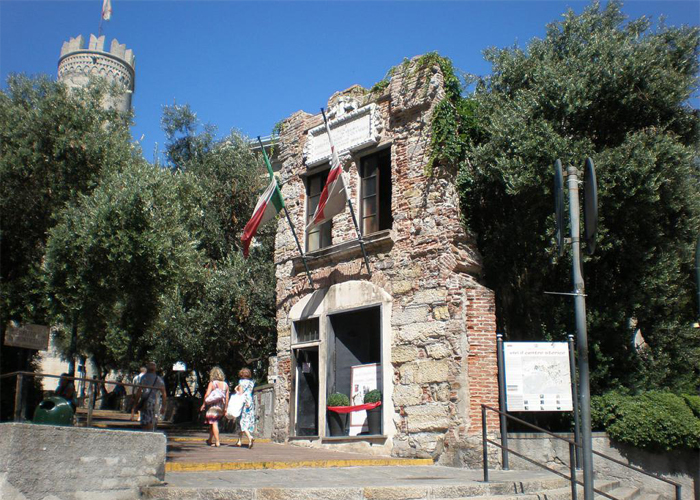
The house believed to be the home of Christopher Columbus is located not far from the gate of Porta Soprana just outside Genoa’s medieval walls. Genoese historian Marcello Staglieno, who is credited with the discovery of the home of Columbus, suggests that Domenico Columbus, father of the great navigator, moved with his family to the Vico Dritto Ponticello in 1455 when Christopher Columbus was only four years old. According to the Museums of Genoa, “The building has two floors: The ground floor was used as a workshop by his father, Domenico Columbus, who dealt in wool weaving and trade; the home of the family was upstairs. Written sources tell that the navigator must have lived here between 1455 and 1470. The front door was on the left of the façade. The house is probably an 18th-century reconstruction of the original medieval building. The house was likely destroyed during the bombing by the French fleet of King Louis XIV that hit Genoa in 1684.”
Palazzo del Principe a Fassolo
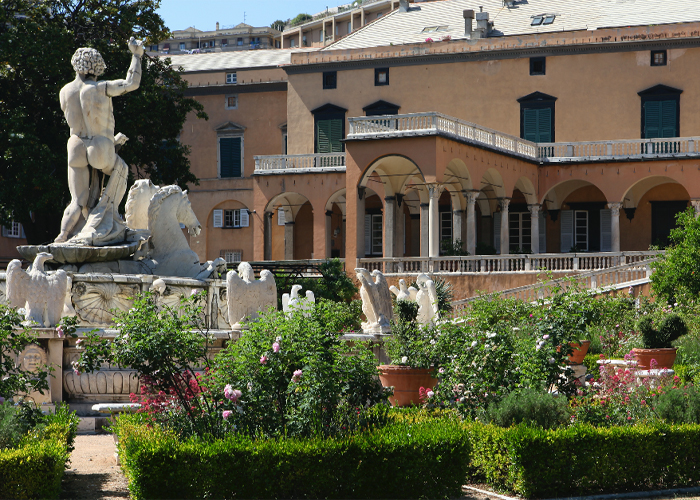
Prince Admiral Andrea Doria, a lifelong senior public official since 1528 and father of the country, refused the lordship of the city with the explanation that he was not interested in power but in caring for the independence and prosperity of the city. Under his command, Genoa experienced a period of extreme economic and artistic splendor, able to compete in beauty, wealth, and trade with any city-state of the time. His favorite villa is nestled in Fassolo, which represented the heart of Genoa’s political, artistic, and social life throughout the 16th century. The villa hosted personalities such as Emperor Charles V and King Philip II of Spain. The chronicles tell of receptions on the sea and a real court, the only one the Republic of Genoa has ever known. In the 19th century the villa hosted Napoleon Bonaparte, King Vittorio Emanuele II, and the composer Giuseppe Verdi.
Genoa Aquarium

Genoa’s essence is water, so it’s no surprise that the Genoa Aquarium is Italy’s biggest and the largest exhibition of biodiversity and ecosystem in Europe. You will discover 12,000 specimens belonging to 600 animal species and 200 vegetal species. The Bigo Panoramic Lift, just beside the building, will take you up 131 feet for a breathtaking 360° view of Genoa. Reservations for visits are required.
Barbara Benzoni
Barbara Benzoni was born in Milan and lives between Rome and Tuscany. She is devoted to USA, the land of courage and innovation. She’s Peter's super-lucky mum and Ale's wife. Cinema, art, good food and only beautiful things are the themes of her existence. With a degree in Italian literature and a Masters in Sports Management she can both enjoys books and basketball matches. In 25 years she has been organizing sport events all over the world and she’s been lucky enough to meet the greatest champs ever. Curiosity in everyday life and people are her drivers. Her personal icon is Mohammed Ali : "It's not bragging if you can back it up".


